Learn about the humble matpakke, one of the most important Norwegian traditions that you’ll see every weekday.
Matpakke is one of those Norwegian words that’s tricky to translate. Broadly, the word means ‘packed lunch': any type of prepared meal you bring with you to work, school, or on a hike.
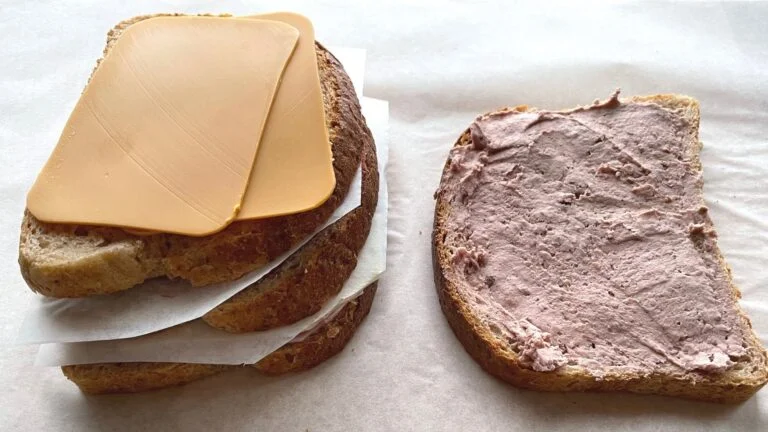
But the word also has a more traditional definition that speaks of a specific kind of packed lunch. It’s this second meaning of the word that we’ll now explore.
A standard matpakke
Your everyday, “traditional” matpakke is usually composed of bread, pålegg (roughly pronounced “paw-leg”) and sometimes a piece of fruit or some raw vegetables. Pålegg is another one of those untranslatable Norwegian words.
Literally it translates as “on-layer”. But what it really means is “stuff you put on bread”. The word encompasses cold cuts, cheese, smoked fish, peanut butter, jam, chocolate spread, liver paté, kaviar (the Norwegian cod-based one that comes in a tube, not the luxury delicacy) and many more options…
To make a typical matpakke you need several slices of bread. We’re talking about whole grain bread here.
You see, bread in Norway is not a side dish. It’s the bulk of your lunch. What you fill up on. Because of this it is quite dense, when compared to standard UK, French or North American bread.
You’re out of bread? Use crispbread. This dry, flat bread conserves well and has been baked for centuries in Scandinavia, precisely because it keeps for so long. Luckily, today you don’t need to bake it yourself because supermarkets offer it in many varieties. After the bread/crispbread comes the pålegg.
Pålegg sparseness
First you’ll want a base layer of butter or margarine, or sometimes mayo. On top of that, the amount of pålegg is relatively small. This may come as a shock to people coming from parts of the world where it is abundant.
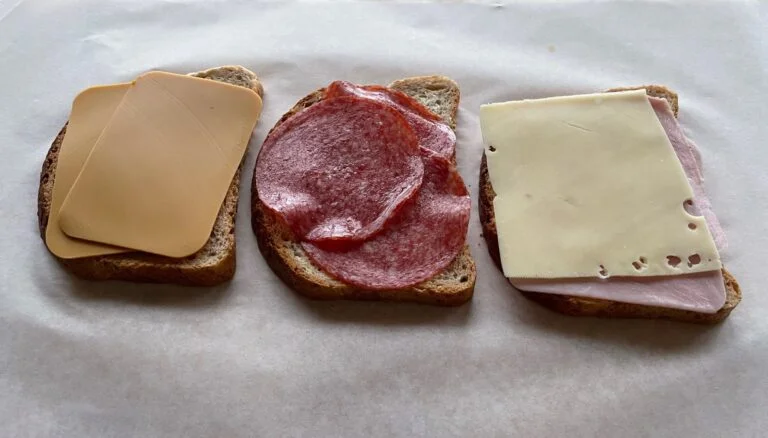
While a deli sandwich in the US might have a full 100 grams (about a quarter pound) of ham and a generous amount of cheese and lettuce, a typical matpakke open sandwich will typically have only one or two slices of the chosen cold cut.
This is generally true for the common, homemade ones. Store-bought or restaurant ones are more generously garnished.
There are no rules about the possible combinations, but some are more common than others.
Norwegian “white cheese” (Norvegia is the most common) often goes with thin slices of red bell pepper. Salami (the Norwegian kind, not the Italian one) is most often seen with a slice or two of cucumber.
Cucumber is also the garnish of choice for liver paté open sandwiches. The list goes on… shrimps and mayo, sliced hard-boiled eggs and kaviar, white cheese and kaviar, etc.
Assembling your matpakke
So now you have a few slices of bread topped with pålegg. How do you bring them with you? The standard solution is to pile them up. The sandwiches are open though, which could cause a mess.
Not to worry: Norwegians have a solution that they call matpapir.
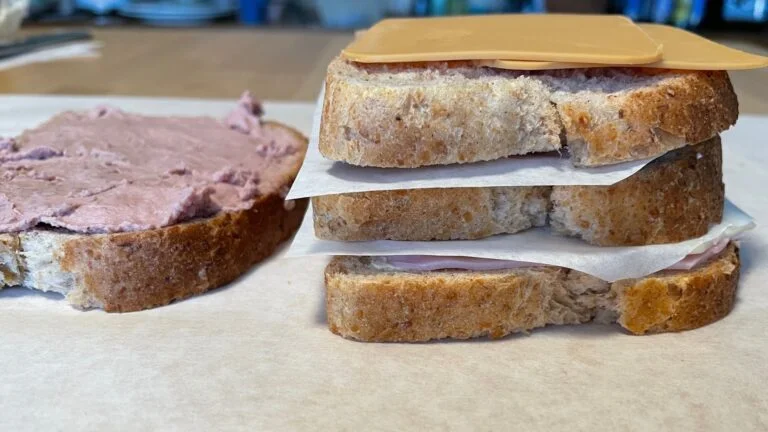
The word literally translates to “food paper”: Clean, special made paper that you can use to keep your different open sandwiches separated. Simply cut it into squares that are approximately the same size as your slices, or buy the precut variety very descriptively called mellomleggspapir (between-layer paper).
Then use a larger sheet of the same paper to wrap the whole pile. Toss it in your work bag and you’re done!
Creatures of habit
It’s always dangerous to make generalisations, but many Norwegians seem to be creatures of habit when it comes to their matpakke. Some of them have been witnessed eating the same combination of bread and pålegg for many lunches in a row.
Is it because they really like the flavour? Maybe they are picky eaters? Or is it a way to be more efficient, like the way Mark Zuckerberg wears identical grey t-shirts every day?
I never dared to ask. It is, after all, none of my business what my colleagues eat for lunch.
Reasons for the matpakke
One possible reason for the popularity of the matpakke is the short duration of the lunch break: normally 30 minutes.
This can take some effort to get used to when you come from a country where you get double that time (or even more). But it can help explain why simple lunches are popular.
Also, restaurants are expensive in Norway, due to food prices and the high cost of labour. Because of this (and because of the aforementioned short lunch breaks), eating lunch at a restaurant is definitely not something most people do every day. It also becomes self-reinforcing: fewer people eating out for lunch means fewer restaurants bother to be open at lunchtime.
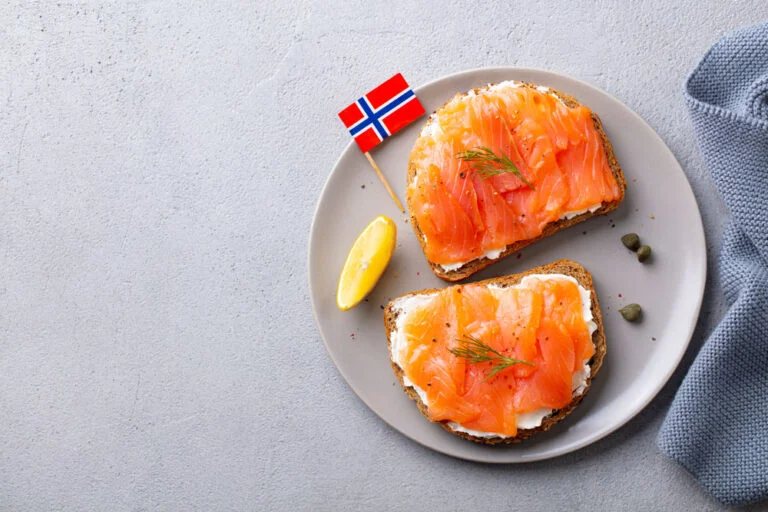
One of the biggest reasons for the popularity of the matpakke is probably that it was introduced as deliberate, calculated change that had positive effects on public health. At the beginning of the 20th century, Oslo schools would serve a lunch of oat porridge to pupils, to prevent malnutrition.
A school doctor, Carl Schiøtz, deemed this measure ineffective and costly. He introduced a replacement meal composed of milk, whole grain bread, cheese and raw vegetable or raw fruit.
From September to April, the children would also be given a spoonful of vitamin-D-rich cod liver oil. Results showed that the children who benefited from the scheme were healthier and grew taller than the ones who didn’t.
To this day, light meals of milk, bread, pålegg and fruit are a common sight in Norwegian schools. Having grown up with these lunches, it’s not too surprising that a number of Norwegians keep the habit as adults.
There’s always an exception!
This article shouldn’t be interpreted as saying that all Norwegians eat the traditional matpakke for lunch. Some of them prefer fancy ones, and even create Pinterest boards about them.
Many workplaces have cafeterias, often subsidised by the employer to make the food a bit cheaper, and lunch delivery services have been popping up in larger towns. But it’s safe to say that the matpakke has a special place in the hearts of many Norwegians.

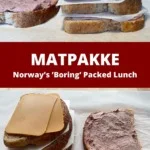




As an American with Norwegian roots. I grew up on open faced sandwiches. They were slightly more elaborate…but the idea was the same. (There is one in my family that is an extra special vacation tradition) Bacon, tomato, and cheese on toast…baked in the oven until warm and melted. Fantastic! And always open faced!
The bread about the only good food in Norway unless you are very, very rich. I’ve been there 4 times at ten year intervals. The first two were food fabulous and only slightly pricey. The last two have been bad and badder. Particularly the hydrogenated oil slime in and under almost everything.
Give me the old country bead and butter as a base to quality paalegg, please. No matter the cost.
A simple, healthy lunch that’s easy to adapt to one’s personal tastes. Why not? Even though we’re both Americans, my husband and I typically eat a couple of slices of crispbread with a little cheese for lunch most days. Quick to fix, filling, tasty, and well-balanced.
Yup – That’s pretty much what I remember. The kids at my (Norwegian) skole generally brought a couple of pålegg (I would translate as ‘on-lay’) in a small rye-bread shaped tin. Of course we’d trade : One of my favorites was sliced egg with sliced tomato (or cuke) garnish.
And don’t forget the lovely mayo that often accompanied the egg or white cheese smørbrød (literally: “butter bread”). It, too, came in toothpaste-sized tubes.
The other Food Revelation: Lakris (Licorice) – often with a salty tang